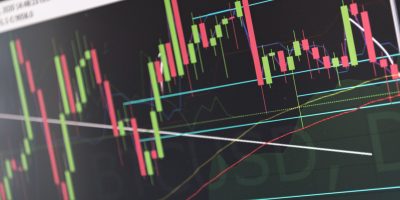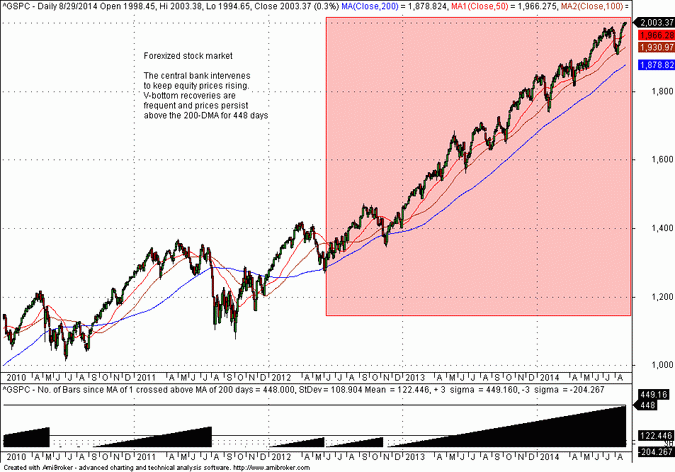Due to central bank intervention via quantitative easing and the rise of dark pools, the stock market is under “forexization”. This will be good for a few major players but, given the experience from the forex market, it is a negative development for retail traders and possibly for small investors.
The stock market is in a “forexization” phase, meaning that it is starting to adopt dynamics that are more forex-like than those we used to know. Some of the new realities include the following:
- Economic policy affects directly equity prices
- The central bank intervenes to affect price direction
- The stock market is getting increasingly fragmented
- Trading hours are extended.
Forex has been a lucrative market for big players with the power to take advantage of the willingness of central banks to lose money in order to support exchange rates (e.g. George Soros in early 1990s betting against British Pound). When a major market participant is willing to lose money in a zero-sum game, this is a great opportunity for those who can take advantage of that. This is happening in the stock market right now via quantitative easing and economic policy. At the same time, dark pools make it harder and harder for technical traders to access the true dynamics of price action as exchange traded volume decreases.
In my opinion, the forexization of the stock market started in the third quarter of 2012, when it became evident to investors and traders that there would be continuing intervention by the central bank to keep equity prices rising. As shown on the above chart, the S&P 500 index as of the close of Friday has been above its 200-DMA for 448 days, just one day shy of the 3-sigma band at 449 calculated with data since 1960. This means that next week the S&P 500 movement will not be a normal event.
During the same time period, as marked by the pink rectangle on the above chart, there has been no consolidation period but only V-style recoveries from short-term corrections, most of them caused by reassurances by the central bank that the policy of supporting equity prices will remain in place for as long as it takes.
This stock market is looking more and more like a currency exchange rate than the old stock market, where investors and traders used fundamentals, prices and volume from a few exchanges to forecast future prices. Fundamental analysis is now limited to whether the central bank will continue boosting equity prices via a low rate policy and quantitative easing and technical analysis are hindered because a good part of the action is taking place in dark pools and the arbitrage that takes place there by just a few major players. The result is an increasing trader casualty rate and the loss of the liquidity they used to provide, which some hope will be provided by high-frequency robots.
Can the stock market survive without small account retail traders? This is an interesting question and I think the answer is no but some think it can and they may know more than I do. But something can always go wrong and it will be very hard to bring these people back as they have either moved to foreign markets or have decided to deal with the real forex market rather than with a forexized stock market. The important realization is that the stock market has a new major participant, the central bank, and this is something new because in the past monetary policy affected stock prices indirectly, whereas nowadays monetary policy is affecting stock prices directly. This can continue for a long time without any major adverse consequences but at the end of the day someone will have to pay the bill and you can take a guess who that will be. It will be you.
Charting and backtesting program: Amibroker
Technical and quantitative analysis of major stock indexes and ETFs is included in our Weekly Premium Reports. Market signals for position traders are offered by our premium Market Signals service
If you found this article interesting, you may follow this blog via RSS or Email, or in Twitter







